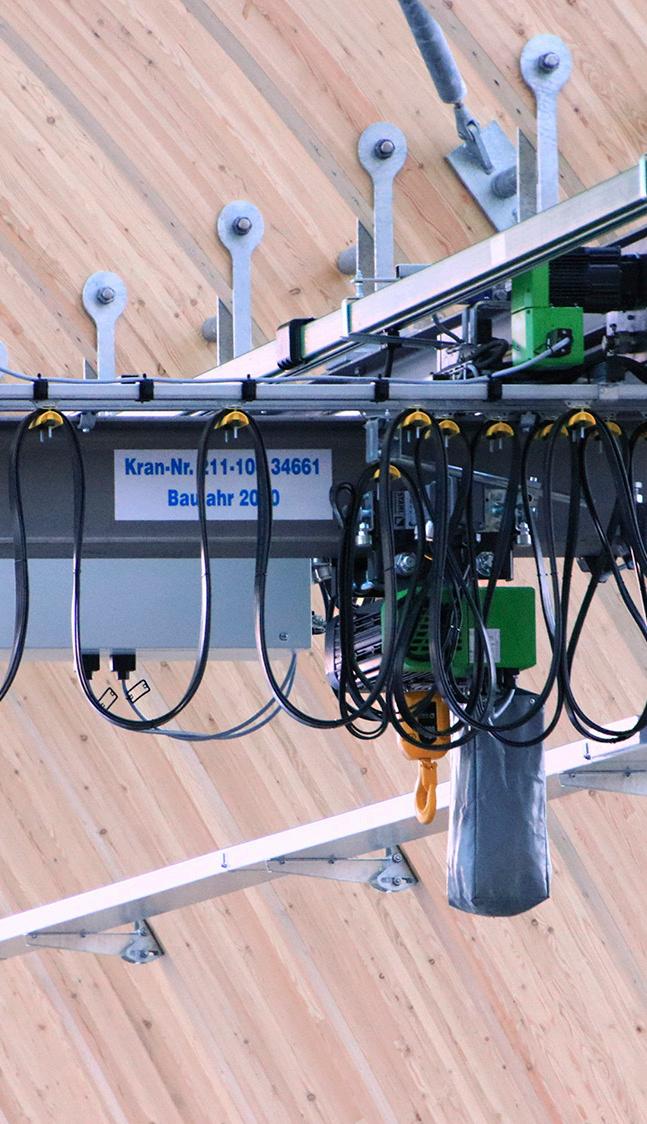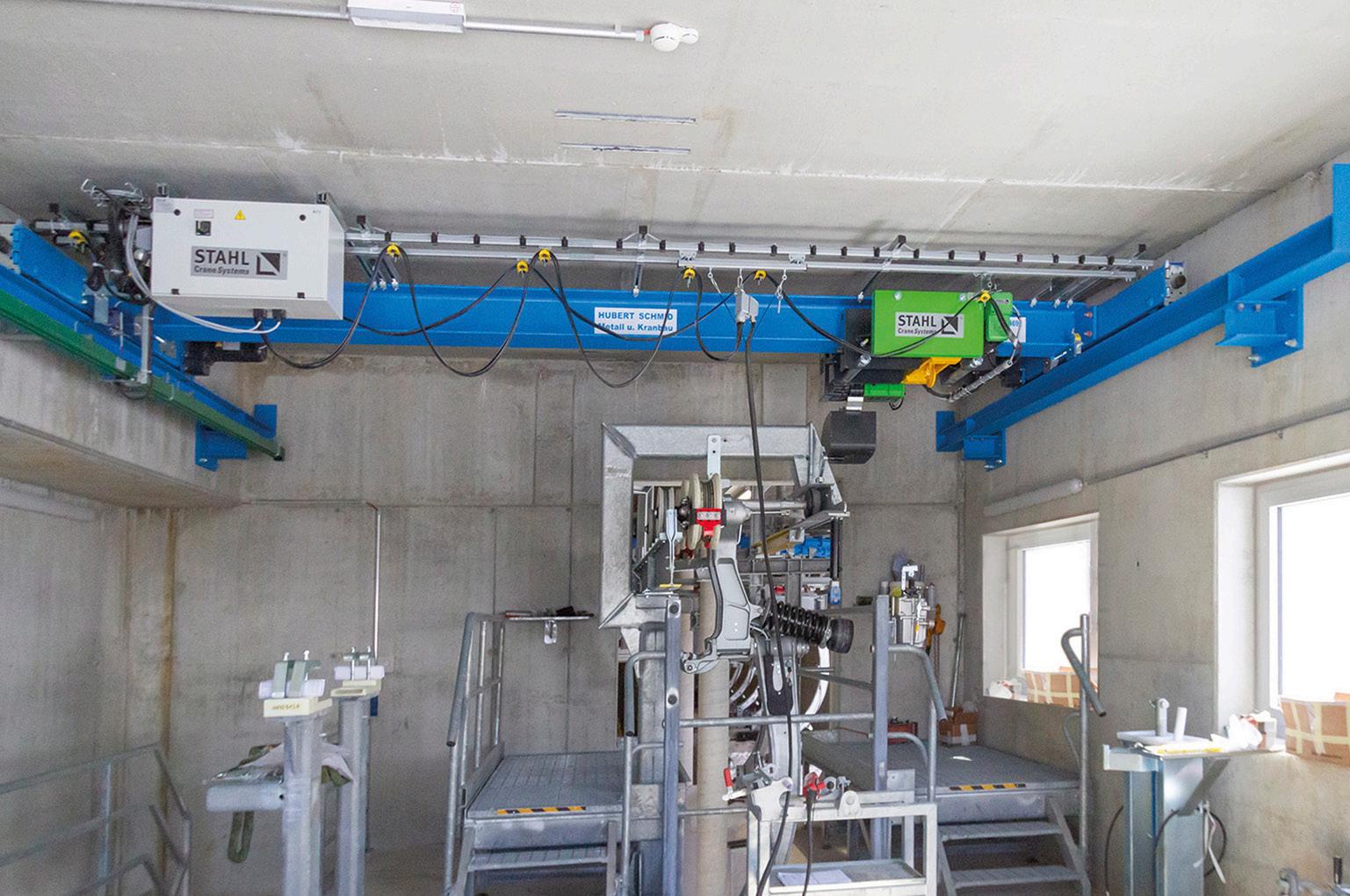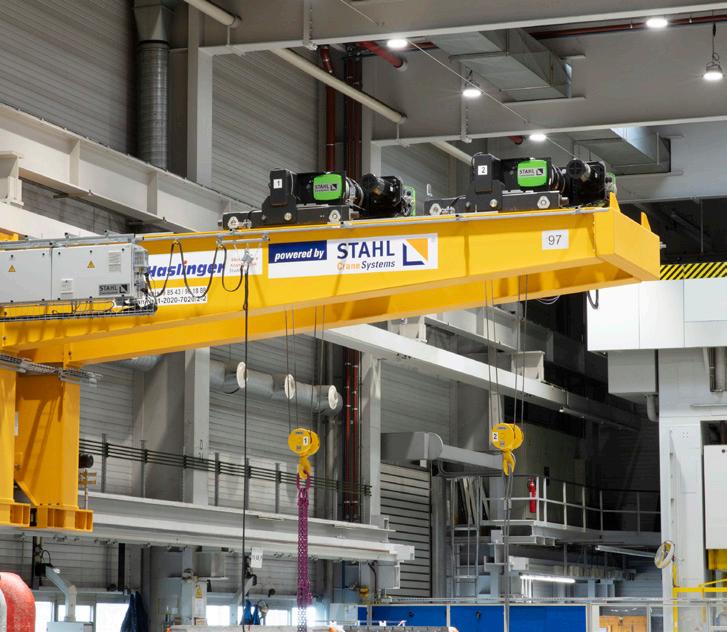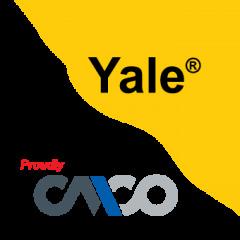
5 minute read
Wall travelling cranes for the automotive industry
No two cranes are alike. But if you're looking for a very special solution, you need an engineering expert in this field, like Haslinger GmbH.
This crane manufacturing partner of STAHL
CraneSystems has implemented no fewer than four wall travelling cranes for a leading German car manufacturer at a site in southern Germany. Apart from the fact that such systems are rather rare per say, the cranes stand out for several special features.
Double-girder wall travelling cranes replace existing systems
The technical presentation and corresponding concept for implementing the planned project outlined in the course of a tender ultimately convinced the customer, resulting in Haslinger winning the contract in mid-2020. Specifically, the project involved the design, production, delivery, and installation of a total of four double-girder wall travelling cranes. In a first step, two systems were initially planned for a hall in which large tools to produce car body components are inspected and prepared. This hall already contained older wall travelling cranes, each with a lifting capacity of 5 t, but they were no longer able to cope with future logistical requirements and were therefore to be replaced by new cranes, each capable of lifting 8 t.
More flexibility and performance on a large area
Looking back, Robert Seibold, head of crane technology at Haslinger sees the construction of the wall travelling cranes as the real challenge in the project: “Compared to overhead travelling or suspension cranes, such cranes are rarely required. Moreover, these were very individual solutions according to customer specifications, for which we had to consider a whole range of requirements. In addition, the cranes had to be installed without disrupting work in the hall. This, however, we are familiar with from other projects and are able to adjust to in our planning and implementation."
The four wall travelling cranes serve as a supplement to an existing bridge crane and thus create a further plane of movement for multi-layered work processes. With a jib length of 8.4 m each and a crane runway length of 80 m, the new cranes can reach almost every point in the approximately 1,600 square meter hall. The wall travelling cranes are therefore able to serve all work areas simultaneously without having to use the main crane, which may not be immediately available because it is needed in another part of the hall.
More precision in lifting and lowering
The project was basically divided into two construction phases, with two wall travelling cranes being installed on one side of the hall in each phase.
"We had already prepared and reinforced the crane runways appropriately beforehand so that they could carry the loads of the new cranes. In order not to interfere with ongoing operations in the hall, the first two cranes were then installed over the turn of the year 2020/2021," Robert Seibold reports.
Haslinger chose a SH 5025-20 electric wire rope hoist with a reduced S.W.L. of 8 t and a lifting height of 6 m from STAHL CraneSystems' standard range as the hoist for one of the two double-girder wall travelling cranes. The SH series wire rope hoists come in five sizes with 27 S.W.L. variants from 500 kg to 32,000 kg. The compact, low-maintenance solutions can be used for stationary lifting operations or with a trolley (in this case an overhead trolley with a maximum travel speed of 10 m/min) in standard and off-standard cranes. In this connection, although all hoists used in this project are standard wire rope hoists, they were customized according to the customer's wishes and equipped with additional safety technology, among other things. Robert Seibold gives an example: “The wire rope hoists normally achieve a maximum lifting speed of 10 m/min. However, the customer wanted the speed to be halved, which we solved with an intermediate gear. A lifting speed of now 5 m/min enables even higher precision when lifting and lowering loads."
Continuous recording of important operating data
One essential component of the SH 5025-20 wire rope hoist for this project is the STAHL SMC 22 multicontroller for continuous load measurements with automatic load control, which immediately switches off the hoist in the event of an overload. As load spectrum memory, the SMC also records a wide range of operating data in real time, including the operating hours, the full-load operating hours, the number of motor switching operations and many other parameters that are important for equally reliable and safe operation of the hoist. Using STAHL CraneSystems' free ConfigTool, the operating data can be read out and evaluated quickly and easily by the operator on a PC or laptop.
"The prescribed annual calculations of the service life of a hoist can also be carried out very accurately with the SMC. In addition, if there should ever be an incident with a crane, the recorded data may make it possible to trace the causes," says Robert Seibold, describing just a few of the advantages of the system.
Single and tandem operation with integrated load aggregation
The second wall travelling crane is identical in design to the first but is distinguished by a number of further special features for which, among other things, the crane's statics had to be designed. Two hoists travel on the upper flange of this crane, more precisely two SH 6040-10 electric wire rope hoists from STAHL CraneSystems with double-grooved rope drum and 4/2 reeving, which prevents lateral hook movement when lifting and lowering loads.
The hoists, also designed for an S.W.L. of 8 t each and a lifting height of 6 m, permit either single or tandem operation and thus offer a high degree of flexibility in use. Load aggregation with a safety PLC is also integrated for tandem operation. It permanently measures and monitors the loads on both crane hooks, thus ensuring that the permissible total load capacity of the crane of 8 t is not exceeded. "In tandem operation, it is possible to transport longer tools more easily and position them more precisely. At the same time, the load is kept in a stable position on both hooks, which, among other things, also prevents the swinging of the load. In a single operation, the tools can, in turn, be turned and rotated safely," explains Robert Seibold and underlines: "In my view, load aggregation with a safety PLC is a certain unique selling point for STAHL CraneSystems' wire rope hoists because the solutions have a very high safety level as a result. The control systems are designed in accordance with EN 15011 and fulfil the high-performance level PL c or PL d depending on requirements."


Special design for the travel axis
Haslinger also realized a special design for the cranes' travel axis using STAHL CraneSystems’ standard end carriages and wheel blocks consisting of three crane runways on each side of the hall. Each crane has two frequency-controlled travel drives on the lower end carriage, which runs on the middle crane runway. With four wheel blocks each, the very high pressure forces are distributed evenly on the lower crane runway. Last, but not least, a so-called crane distance control was installed on all cranes. The solution in the form of a photo-electric barrier with optical sensors prevents accidental collision of two cranes in operation on one travel axis by automatically reducing the speed of the moving crane when it approaches the neighbouring crane.
Successful completion of the second construction phase
Due to the far-sighted planning and organization in advance, the de-installation of the existing cranes and the complete installation of the first two new wall travelling cranes, including commissioning, took only two weeks.
The car manufacturer was obviously extremely satisfied with the results of the project because in March 2021 Haslinger received the order for the two additional wall travelling cranes, which are identical to the first solutions. They were put into operation in the summer of 2021 during a planned break in the car manufacturer's production.


"We have become experts in the engineering of offstandard crane systems in recent years. The successful project at the car manufacturer is an example of our individual complete solutions, optimally tailored to the customer's needs thanks to STAHL CraneSystems' modular system," is Robert Seibold's positive conclusion.











